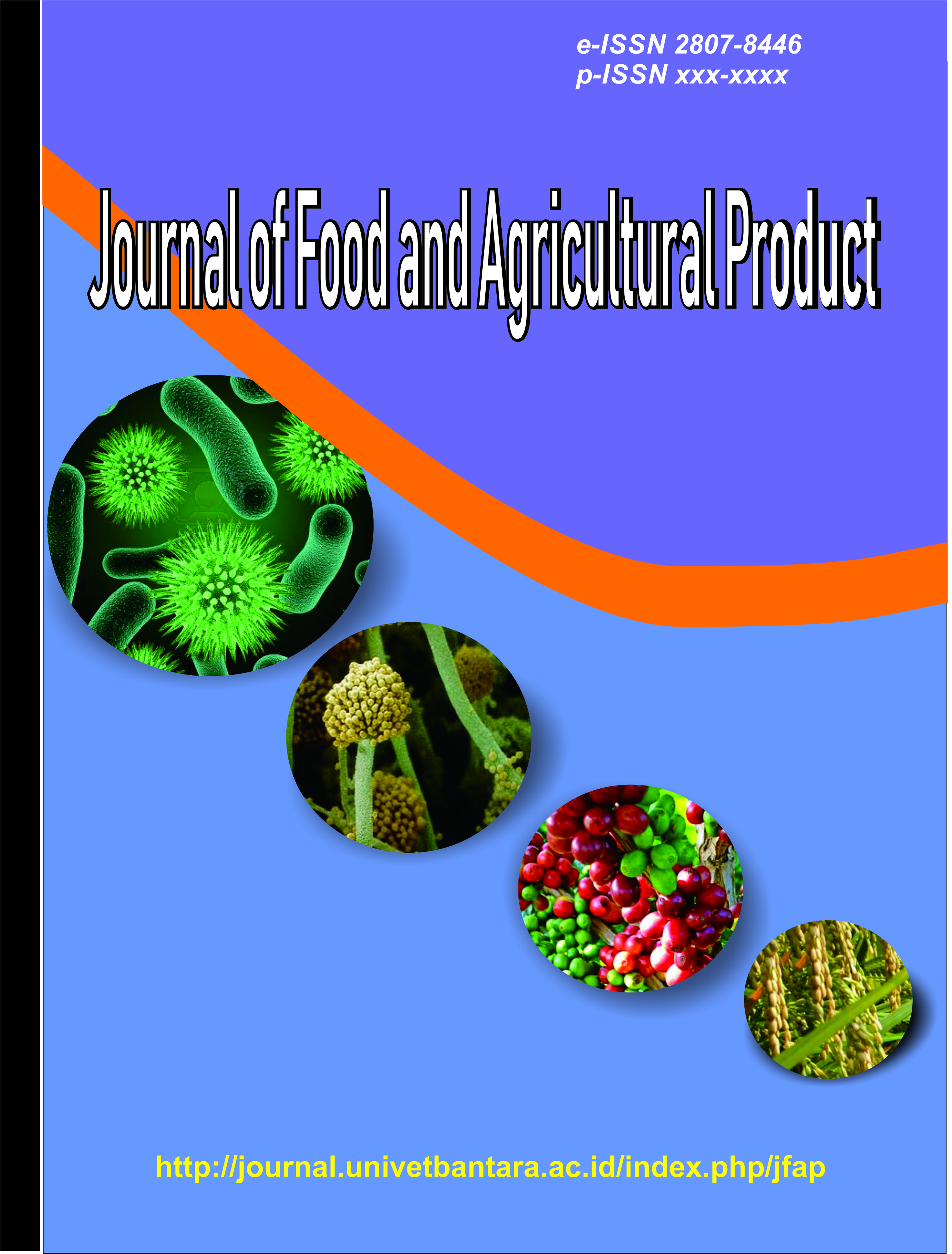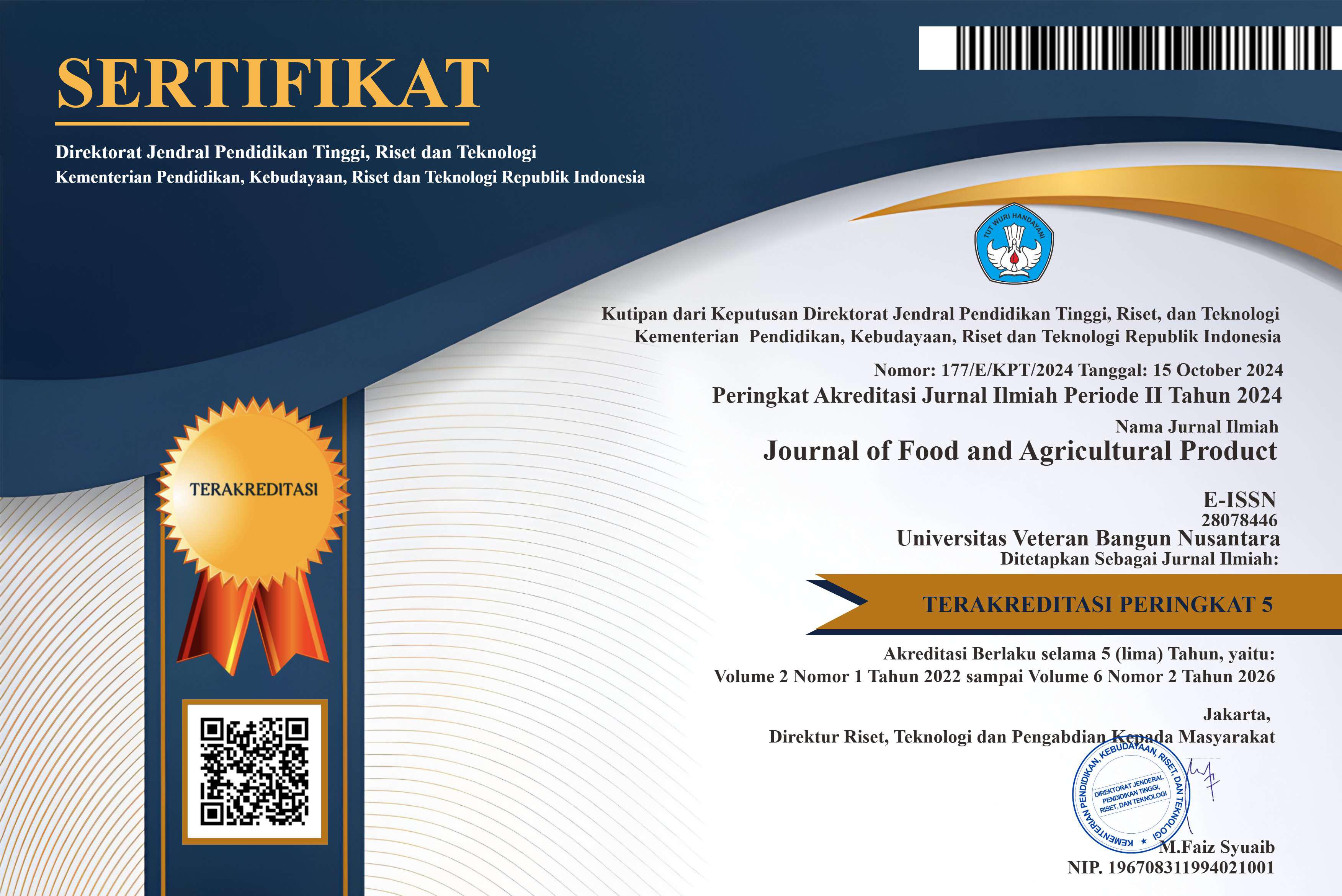Effect of Soaking Temperature on Water Absorption of Red Beans and Soybeans
DOI:
https://doi.org/10.32585/jfap.v5i1.6338Abstract
Beans are an agricultural commodity that is widely used as raw material for making various types of food products. One of the pre-processing steps for these beans is by soaking. Soaking aims to soften the texture of the beans so that they are easier to process later. Red beans are usually used in making porridge because of their high carbohydrate content, while soybeans have a higher protein content and are usually used to make tofu and tempeh. Soaking results in the mass transfer of water into the material being soaked, resulting in an increase in its mass. This research aims to determine the effect of variations in soaking temperature on the water absorption of red beans and soybeans during soaking. Red beans and soybeans were soaked in water at three temperature variations, namely 10oC, 30oC and 50oC for 1 hour and the mass of the beans was measured every 10 minutes. From the research results it was found that there was an increase in the mass of red beans and soybeans during soaking. There are differences in the increase in mass of red beans and soybeans caused by the type of bean and variations in soaking temperature. The highest amount of water absorption of red beans and soybeans was found when soaked at a temperature of 500C: 42.99% for red beans and 74.67% for soybeans.
Keywords: Red bean, Soy bean, Soaking, Temperature, Water absorption
Downloads
Downloads
Published
How to Cite
Issue
Section
License
Copyright (c) 2025 Afnita Nur Amalina, Denny Setyawan, Tia Aulia NH, Rina Meilawati, Rini Meilasanti, Sheila Tyastimei

This work is licensed under a Creative Commons Attribution-NonCommercial-ShareAlike 4.0 International License.




